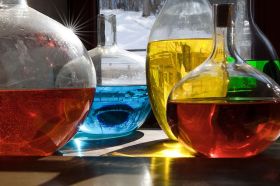
This post will explore water properties. Water freezes at 0 degrees Celsius and boils at 100 degrees Celsius. Dr. Jhon points out that if water would conform to the other liquids in its class that it would freeze at -90 degrees Celsius and boil at -60 degrees Celsius. According to this model, water could evaporate at room temperature and not much water would exist on our planet if that were the case.
Here Are 5 Reasons Water Properties Are Different From Other Liquids:
- Water's density is different. It expands as it freezes instead of contracting. That is why ice floats and fish are protected from being frozen in their habitat.
- Water has a “large heat capacity.” That is the reason we can be in a hot environment and still survive (as long as we are hydrated). Water is able to pull in heat without its own temperature fluctuating too much. In the desert, we experience extreme cold at night and extreme heat during the day. This is because there is very little water to balance the environment.
- Water’s viscosity or thickness is different than other liquids. Under pressure, water’s thickness lowers (at temperatures under 30 degrees Celsius) when other liquids would raise their thickness under pressure.
- Water has high surface tension, meaning that molecules of water are more highly attracted to each other than to foreign molecules. The only other substance with higher surface tension than water is mercury.
- Water has the ability to retain memory. It holds the energy of other things in its vicinity. Dr. Jhon notes that this fact alone could be studied for further knowledge in the healing profession. Dr. Jhon says that it is because of water’s “unique” structural ability that all these factors are made possible.
Thanks for checking out our post on water properties
Reference: “The Water Puzzle and the Hexagonal Key” by Dr. Mu Shik Jhon
To learn more about Natural Action Structured Water Units, please visit our Store.

 Twitter
Twitter Facebook
Facebook RSS
RSS Call 928-202-9155
Call 928-202-9155